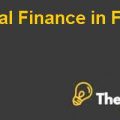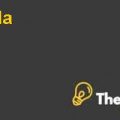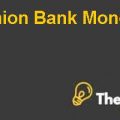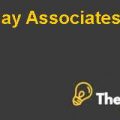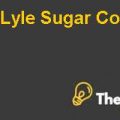
Classification of cash and cash equivalent versus short-term statement
Cash and cash equivalents are very different from short-term investments. Cash and cash equivalents are highly liquidate assets and are readily convertible into cash; usually the securities have maturity within three month of the purchase of security whereas short-term investments are securities having maturity of greater than three months.
Cash and cash equivalents are highly liquidate assets and there is no or little risk attached with these securities because its value does not depends on interest rates, exchange rates and market fluctuations and could easily be convertible into cash when available in the market whereas on the other hand, the short-term investment securities depends on interest rates, exchange rates and its buyer are not immediately available.
The classification of cash and cash equivalents and short term investments are particularly very important in order to determine the liquidity position of the company because the company has an idea of readily convertible into cash items which could help them in managing the working capital of the company. Including the company could take an advantage of investing in any worthwhile opportunity which may arise for a limited period of time and the company can also take an advantage of early payment discount.
The basic objective of holding short-term investments are to enjoy short-term profits with a desire to sell in near future but the risk attached is ultimately very high which also threatens the recovery of principal amount.
Valuation of inventory
The Gap values inventory on the basis of lower of cost or net realizable value. The company adopts a policy to value the inventory at weighted average cost method. At every year end, the company conducts an inventory count in order to determine the closing inventory at the end of period and to identify any obsolete and slow moving inventory to write it off accordingly.
The company operates under a fashion industry so there is a high risk that the fashion goes out of trend which may cause the company to bear high cost of obsolete inventory.
Closing inventory represents a major portion of the cost of goods sold, so a slight change in closing inventory could significantly threaten the COGS and hence the operating profit of the company, so accurate valuation of closing inventory is particularly very important in determining the COGS and hence the net profit.
Sometimes, management adopts an aggressive policy to overvalue its inventory and to increase its profit. This practice can significantly threaten the interest of shareholders.
Derivative Financial Instruments
The company recognizes derivatives at fair value in the consolidated balance sheet. Derivatives such as future and options are designated under cash flow hedge. The effective portion of gain or loss occurred due to a change in derivative financial instrument are measured under Other Comprehensive Income (OCI) whereas, the difference between the effective and in-effective portion of the change in the fair value is recognized immediately in profit or loss.
The derivative financial instruments that qualify as net investment hedge are treated differently and the effective portion of gain or loss on derivative financial instruments are reported under OCI and will later on be re-classified as income or expense in the period, in which the subsidiary is sold or liquidated.
The gain or loss of derivatives that do not qualify as hedging instruments are recorded in operating expenses or income in the consolidated statement of income.
Asset retirement obligation
Asset retirement obligation is the future obligation of the company to restore the property and to keep the property in the existing condition. The company recognizes this when it is contractually obliged to restore the site in its existing condition. A reasonable estimate of the fair value is made to recognize the obligation.
The company can adopt two approaches. First, the company can estimate the fair value of the obligation and record it as an accrued expense with a corresponding entry over the lease term. Second, the company can also adopt a practice to recognize the fair value of obligation at the initial recognition of asset and depreciate the asset over its useful life.
Through this practice, the company avoids any adverse effect of substantial cost in a single period at the end of life but in fact it considers the effect of future related cost over the useful life of asset.....................................
This is just a sample partial case solution. Please place the order on the website to order your own originally done case solution.

